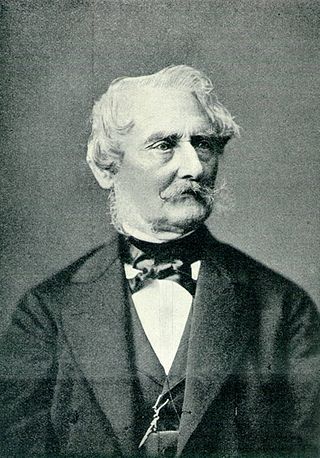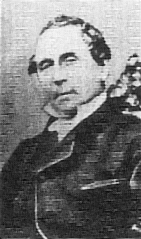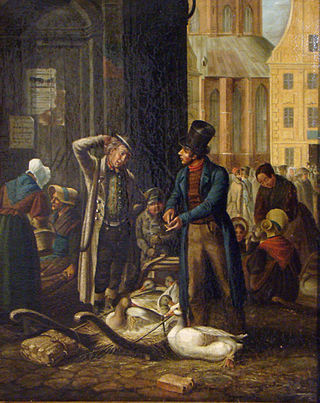
August Albrecht Christian Tischbein (29 July 1768, Hamburg - 10 September 1848, Rostock) was a German painter and lithographer from the Tischbein family of artists.

August Albrecht Christian Tischbein (29 July 1768, Hamburg - 10 September 1848, Rostock) was a German painter and lithographer from the Tischbein family of artists.
He was the son of Johann Jacob Tischbein, known as the Lübecker Tischbein. From 1786 to 1788, he studied with his uncle Johann Heinrich Tischbein (the Kasseler Tischbein). From 1792 to 1803, he worked in Lübeck. After 1803, he lived in the small town of Sternberg in Mecklenburg, where his son Albrecht was born; one of the few Tischbeins who did not pursue a career in art.
After 1805, he opened his main studio in Rostock. In 1814, he helped revise the map of Tarnow. After 1829, he worked as a drawing teacher. His architectural drawings and cityscapes of Lübeck and Rostock are considered to be of great historical importance.
His other sons, Paul and August Anton (1805-c.1867), followed the family tradition and became painters.

Rostock, officially the Hanseatic and University City of Rostock, is the largest city in the German state of Mecklenburg-Vorpommern and lies in the Mecklenburgian part of the state, close to the border with Pomerania. With around 210,000 inhabitants, it is the third-largest city on the German Baltic coast after Kiel and Lübeck, the eighth-largest city in the area of former East Germany, as well as the 39th-largest city of Germany. Rostock was the largest coastal and most important port city in East Germany.

Güstrow is a town in Mecklenburg-Vorpommern in north-eastern Germany. It is capital of the Rostock district; Rostock itself is a district-free city and regiopolis.

Sternberg is a town in the Ludwigslust-Parchim district of the state of Mecklenburg-Vorpommern.

Tribsees is a municipality in the Vorpommern-Rügen district, in Mecklenburg-Vorpommern, in north-eastern Germany. It is situated 33 kilometres (21 mi) southwest of Stralsund, and 40 kilometres (25 mi) east of Rostock.

Ferdinand Jagemann was a German painter; known primarily for his portraits.

Johann Heinrich Strack was a German architect of the Schinkelschule. His notable works include the Berlin Victory Column.
Heinrich Pommerencke (1821–1873) was a successful portrait painter of Mecklenburg-Schwerin.

Friedrich Carl Gröger was a north-German portrait painter and lithographer. One of the most respected portraitists of his time in northern Germany, his works are to be found in several museums, including the Hamburger Kunsthalle, as well as in north German, Holstein and Danish private collections.

Johann Friedrich August Tischbein, known as the Leipziger Tischbein was a German portrait painter from the Tischbein family of artists.
The Tischbein family was a German family of artists, originating in Hesse and spanning three generations. The family patriarch, Johann Heinrich Tischbein (1682–1764), was a master baker at the State Hospital in Haina. The Tischbeins also produced a number of master carpenters..

Johann Jacob Tischbein, known as the Lübecker Tischbein, was a German painter from the Tischbein family of artists.

Johann or John Eckstein (1735–1817), was a German-born sculptor, engraver and painter who worked briefly in London before establishing himself in his homeland and then in America. He is not to be confused with his son, also known as John, a painter who worked in England and the West Indies.

Franz Wilhelm Johann Bunke was a German landscape painter.

Rudolph Friedrich Carl Suhrlandt was a German portrait painter and lithographer.

Johann Heinrich Albrecht Tischbein was a German engineer and shipbuilder; one of the designers of the first German iron screw steamers.

Paul Ludwig Philipp Wilhelm Tischbein was a German illustrator and painter; primarily of landscapes and genre scenes. He was a member of the Tischbein family of artists.

Karl Lorenz Rettich was a German landscape artist and draftsman.

Wilhelmine Suhrlandt, née Skoglund was a German lithographer.

Carl Suhrlandt was a German painter. All of his works feature animals; mostly horses.
Friedrich Ludwig Heinrich Waagen also Christian Friedrich Ludwig Heinrich Waagen, Wagen or Wage) was a German portrait, history and landscape painter born in the Holy Roman Empire. Hardly anything is known about his works. However, he had acquired extensive knowledge of art, amassed a collection of paintings in Hamburg and was known to friends with or in-laws of many important personalities of his time. Gustav Friedrich Waagen (1794-1868) and Carl Waagen (1800-1873) are his sons.